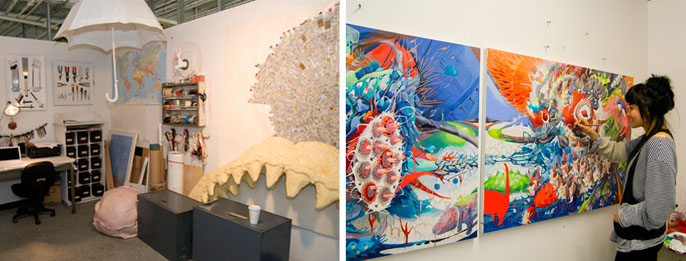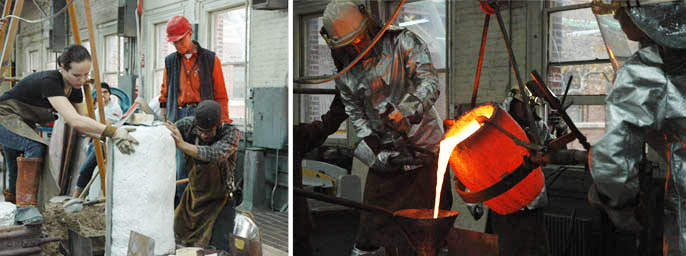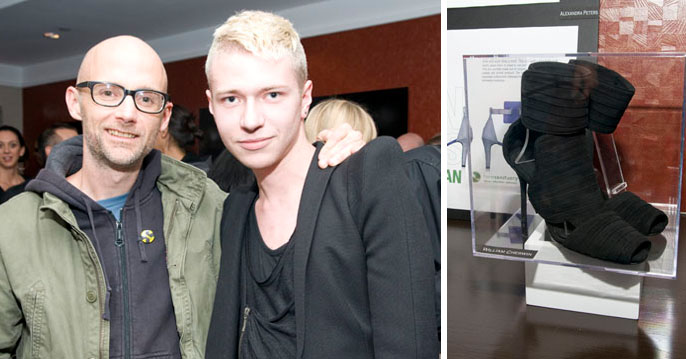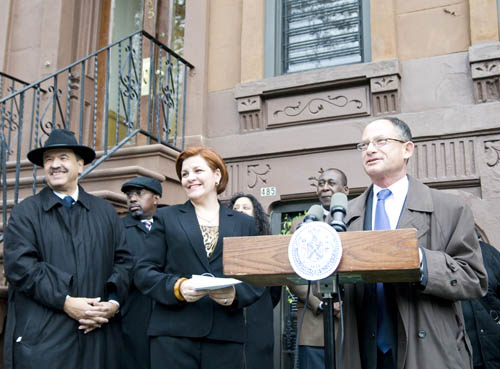M.F.A. STUDENTS HOST OPEN STUDIOS
All seven studio buildings that house Pratt’s expansive graduate program in fine arts were open to the public on the evening of Friday, December 3, making it possible to view first hand the works of 137 participating students in Pratt's nationally recognized Master of Fine Arts degree program. Open to visitors for the first time were the new Flushing Studios, located at 248 Flushing Avenue, Brooklyn, not far from the Pratt campus. M.F.A. Open Studios occurs in fall and spring, presenting the public with painting, sculpture, photography, drawing, collage, printmaking, installation, video, new forms, digital arts, and performance. This season’s turnout included art collectors and gallery directors among the many art enthusiasts from the Pratt community.
 (Left): Catherine Hancher (M.F.A. ’12) at her drawing table in the new Flushing Avenue studios near the Pratt Brooklyn campus (Right): Works in progress by Matthew Robinson (M.F.A. ’11) on the walls of his studio in Esther Lloyd-Jones Hall
(Left): Catherine Hancher (M.F.A. ’12) at her drawing table in the new Flushing Avenue studios near the Pratt Brooklyn campus (Right): Works in progress by Matthew Robinson (M.F.A. ’11) on the walls of his studio in Esther Lloyd-Jones Hall
 (Left): Studio of Ryan Gilmartin (M.F.A. ’11) in the basement of Pratt Studios. (Right): Mi Ju (M.F.A. ’12) in her Flushing Avenue studio near the Pratt Brooklyn campus
(Left): Studio of Ryan Gilmartin (M.F.A. ’11) in the basement of Pratt Studios. (Right): Mi Ju (M.F.A. ’12) in her Flushing Avenue studio near the Pratt Brooklyn campus
 (Left): Studio of Ryan Turley (M.F.A. ’11) in the basement of Pratt Studios (Right): Anthony Palocci Jr. (M.F.A. ’12) at work in his Flushing Avenue studio near the Pratt Brooklyn campus Photos: Diana Pau
(Left): Studio of Ryan Turley (M.F.A. ’11) in the basement of Pratt Studios (Right): Anthony Palocci Jr. (M.F.A. ’12) at work in his Flushing Avenue studio near the Pratt Brooklyn campus Photos: Diana Pau

 Gateway Editors
Gateway Editors


